Quasi-One-Dimensional Flow Modeling for Flight Environment Simulation System of Altitude Ground Test Facilities
Abstract
:1. Introduction
2. Component Models of the FESS
2.1. Pipe Model
2.1.1. Quasi-One-Dimensional Flow in Pipe
- The fluid in control volume has uniform properties at each streamwise location.
- The axial heat transfer process and gravitational potential energy of the fluid are ignored.
2.1.2. Heat Transfer Model of Pipe
2.2. Regulating Valve Model
2.3. Volume Model
2.4. Other Related Models
2.4.1. Air Source Model
2.4.2. Engine Model
3. Simulation Model of the FESS
4. Model Simulation and Verification
4.1. Model Verification
4.2. Closed-Loop Control Simulation of Intake Air Temperature and Pressure
5. Conclusions
- The simulation results under typical working conditions are compared with the experimental data to verify that the model has high confidence, in which the relative error of mass flow is no more than 4.4%, and the relative error of pressure at the specified cross section is no more than 0.9%. The model can meet the actual needs in engineering.
- The model has the ability to verify and test the system control algorithm and can support the development and verification of advanced technology of the FESS.
- The model is affected by the flow coefficient of the regulating valve and other parameters. With the accumulation of a large number of experimental data and the calculation of high-precision three-dimensional simulation data, the accuracy of the model can be further improved.
Author Contributions
Funding
Institutional Review Board Statement
Informed Consent Statement
Data Availability Statement
Acknowledgments
Conflicts of Interest
Nomenclature
| A | = | Area | p | = | Pressure |
| = | Contact area between pipe inner | = | Heat transfer rate | ||
| wall and airflow | = | Heat transfer rate of the shell | |||
| = | Regulating valve circulation area | = | Heat transfer rate of throttle | ||
| = | Heat transfer contact area | element | |||
| between regulating valve and | = | Heat transfer rate of external | |||
| external environment | environment | ||||
| = | Specific heat capacity of metal in | R | = | Perfect gas constant | |
| pipe | T | = | Temperature | ||
| CS | = | Control volume surface | = | Pipe wall temperature | |
| CV | = | Control volume | = | Environment temperature | |
| D | = | Diameter | = | Shell temperature | |
| e | = | Energy per unit mass | = | Throttle element temperature | |
| E | = | Total energy | u | = | Velocity |
| f | = | Friction coefficient | vb | = | Behind regulating valve |
| F | = | Force | vf | = | In front of regulating valve |
| = | Heat transfer coefficient | V | = | Volume | |
| i | = | Control volume boundary index | = | Power | |
| I | = | Control volume center index | = | Axial distance between the | |
| K | = | Local pressure loss coefficient | centers of adjacent control | ||
| volumes | |||||
| m | = | Mass | = | Specific heat ratio | |
| = | Mass of pipe | = | Pressure ratio | ||
| = | Mass of shell | = | Density | ||
| = | Mass flow rate | = | Flow coefficient | ||
| = | Regulating valve flow rate |
References
- Montgomery, P.A.; Burdette, R.; Krupp, B. A Real-Time Turbine Engine Facility Model and Simulation for Test Operations Modernization and Integration. In Proceedings of the ASME Turbo Expo 2000: Power for Land Sea, and Air, Munich, Germany, 8–11 May 2000. [Google Scholar] [CrossRef]
- Montgomery, P.A.; Burdette, R.; Wilhite, L.; Salita, S. Modernization of a Turbine Engine Test Facility Utilizing a Real-Time Facility Model and Simulation. In Proceedings of the ASME Turbo Expo 2001: Power for Land Sea, and Air, New Orleans, LA, USA, 4–7 June 2001. [Google Scholar] [CrossRef]
- Davis, M.; Montgomery, P. A Flight Simulation Vision for Aeropropulsion Altitude Ground Test Facilities. In Proceedings of the ASME Turbo Expo 2002: Power for Land Sea, and Air, Amsterdam, The Netherlands, 3–6 June 2002. [Google Scholar] [CrossRef]
- Sheeley, J.M.; Sells, D.A.; Bates, L.B. Experiences with Coupling Facility Control Systems with Control Volume Facility Models. In Proceedings of the 42ndAIAA Aerospace Sciences Meeting and Exhibit, Reno, NE, USA, 5–8 January 2004. [Google Scholar] [CrossRef]
- Butler, K.; Milhoan, A. Upgrades to the Aerodynamic and Propulsion Test Unit Heated Fuel System. In Proceedings of the 19th AIAA International Space Planes and Hypersonic Systems and Technologies Conference, Atlanta, GA, USA, 16–20 June 2014. [Google Scholar] [CrossRef]
- Boraira, M.; Van Every, D. Design and Commissioning of a Multivariable Control System for A Gas Turbine Engine Test Facility. In Proceedings of the 25th AIAA Aerodynamic Measurement Technology and Ground Testing Conference, San Francisco, CA, USA, 5–8 June 2006. [Google Scholar] [CrossRef]
- Schmidt, K.J.; Merten, R.; Menrath, M.; Braig, W. Adaption of The Stuttgart University Altitude Test Facility for BR700 Core Demonstrator Engine Tests. In Proceedings of the ASME International Gas Turbine & Aeroengine Congress & Exhibition: The American Society of Mechanical Engineers, Stockholm, Sweden, 2–5 June 1998. [Google Scholar] [CrossRef] [Green Version]
- Bierkamp, J.; Köcke, S.; Staudacher, S.; Fiola, R. Influence of ATF Dynamics and Controls on Jet Engine Performance. In Proceedings of the ASME Turbo Expo 2007: Power for Land Sea, and Air, Montreal, QC, Canada, 14–17 May 2007. [Google Scholar] [CrossRef]
- Weisser, M.; Bolk, S.; Staudacher, S. Hard-in-the-Loop-Simulation of a Feedforward Multivariable Controller for the Altitude Test Facility at the University of Stuttgart. 2013. Available online: https://www.dglr.de/publikationen/2013/301179 (accessed on 9 February 2022).
- Pei, X.T.; Zhang, S.; Dan, Z.H.; Zhu, M.Y.; Qian, Q.M.; Wang, X. Study on Digital Modeling and Simulation of Altitude Test Facility Flight Environment Simulation System. J. Propul. Technol. 2019, 40, 1144–1152. [Google Scholar] [CrossRef]
- Zhu, M.Y.; Wang, X.; Pei, X.T.; Zhang, S.; Dan, Z.H.; Miao, K.Q.; Liu, J.S.; Jiang, Z. Multi-Volume Fluid-Solid Heat Transfer Modeling for Flight Environment Simulation System. J. Propul. Technol. 2020, 41, 2848–2859. [Google Scholar] [CrossRef]
- Zhu, M.Y.; Wang, X.; Zhang, S.; Dan, Z.H.; Pei, X.T.; Miao, K.Q.; Jiang, Z. PI Gain Scheduling Control for Flight Environment Simulation System of Altitude Ground Test Facilities Based on LMI Pole Assignment. J. Propul. Technol. 2019, 40, 2587–2597. [Google Scholar] [CrossRef]
- Zhu, M.Y.; Wang, X.; Pei, X.T.; Zhang, S.; Dan, Z.H.; Liu, J.S.; Miao, K.Q.; Jiang, Z. Temperature Delay Uncertainty μ Synthesis for Flight Environment Simulation System of Altitude Ground Test Facilities. J. Propul. Technol. 2020, 41, 1861–1870. [Google Scholar] [CrossRef]
- Dan, Z.H.; Zhang, S.; Bai, K.Q.; Qian, Q.M.; Pei, X.T.; Wang, X. Air Intake Environment Simulation of Altitude Test Facility Control Based on Extended State Observer. J. Propul. Technol. 2021, 42, 2119–2128. [Google Scholar] [CrossRef]
- Wang, X.Y. Fundamentals of Aerodynamics; Northwestern Polytechnical University Press: Xi’an, China, 2006; pp. 56–69. ISBN 7-5612-2142-8. [Google Scholar]
- Boylston, B.M. Quasi-One-Dimensional Flow for Use in Real-Time Facility Simulations. Master’s Thesis, University of Tennessee, Knoxville, TN, USA, 2011. Available online: https://trace.tennessee.edu/utk_gradthes/1058 (accessed on 9 February 2022).
- Pei, X.T.; Zhu, M.Y.; Zhang, S.; Dan, Z.H.; Wang, X.; Wang, X. An Iterative Method of Empirical Formula for the Calculation of Special Valve Flow Characteristics. Gas Turb. Exp. Res. 2016, 29, 35–39. Available online: https://kns.cnki.net/kcms/detail/detail.aspx?FileName=RQWL201605009&DbName=CJFQ2016 (accessed on 9 February 2022).
- Zhu, M.Y.; Pei, X.T.; Zhang, S.; Dan, Z.H.; Wang, X.; Wang, X. A Modified Algorithm for Flow Characteristics of Disc Type Special Control Valve. Gas Turb. Exp. Res. 2016, 29, 40–45. Available online: https://kns.cnki.net/kcms/detail/detail.aspx?FileName=RQWL201605010&DbName=CJFQ2016 (accessed on 9 February 2022).
- Yang, S.B.; Wang, X.; Wang, H.N.; Li, Y.G. Sliding Mode Control with System Constraints for Aircraft Engines. ISA Trans. 2019, 98, 1–10. [Google Scholar] [CrossRef] [PubMed]
- Yang, S.B.; Wang, X.; Yang, B. Adaptive Sliding Mode Control for Limit Protection of Aircraft Engines. Chin. J. Aeronaut. 2018, 31, 1480–1488. [Google Scholar] [CrossRef]
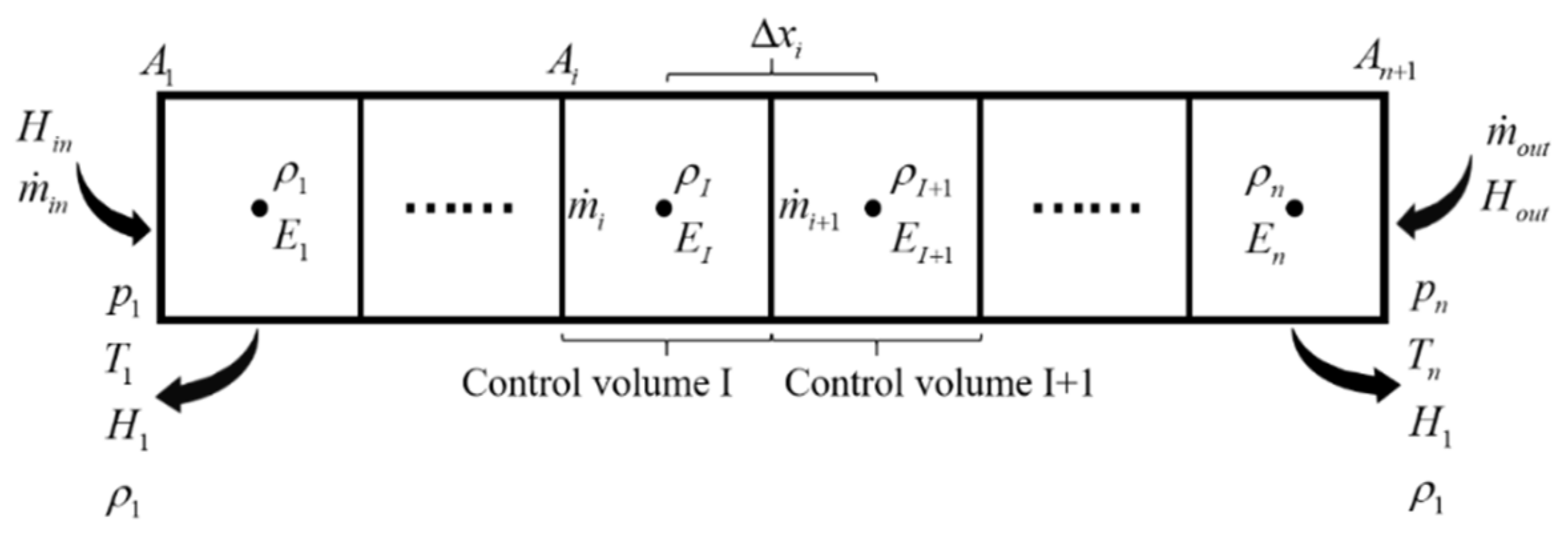
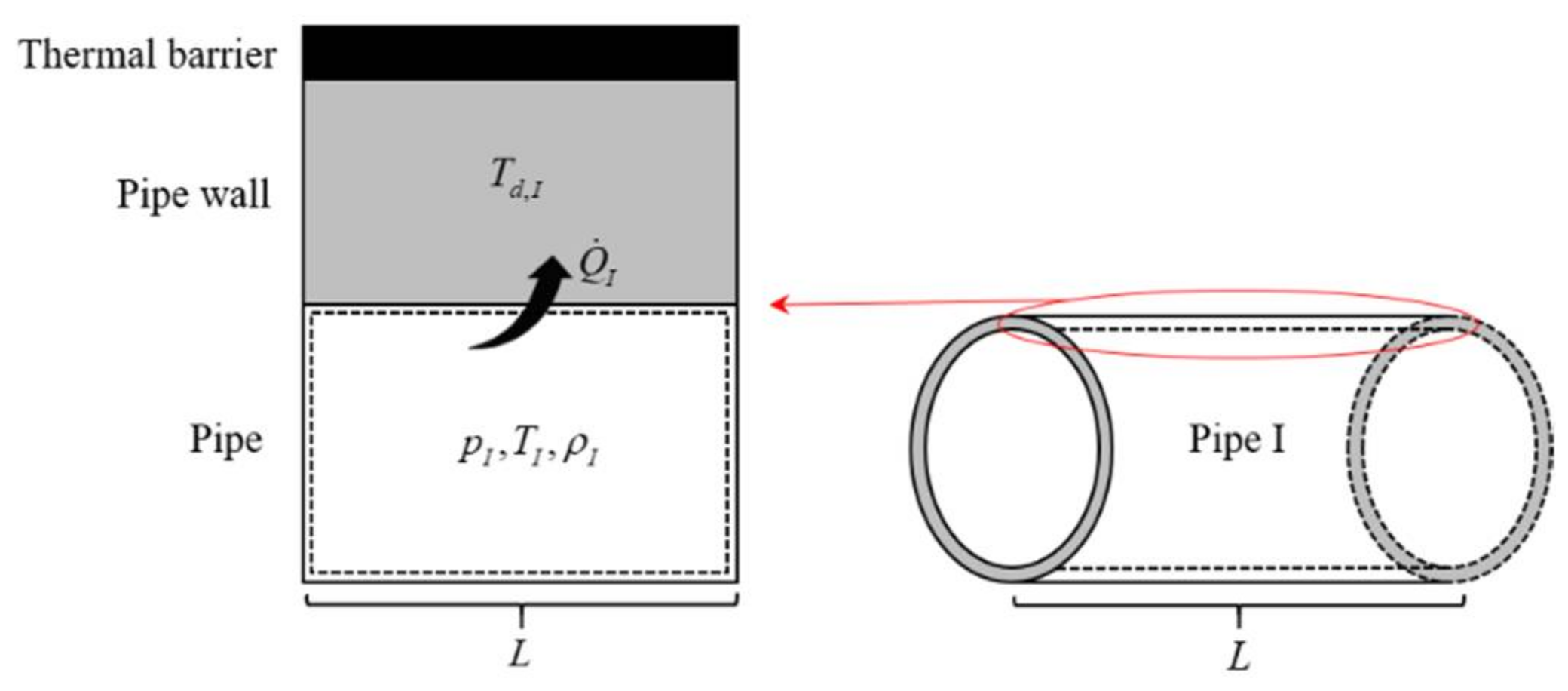



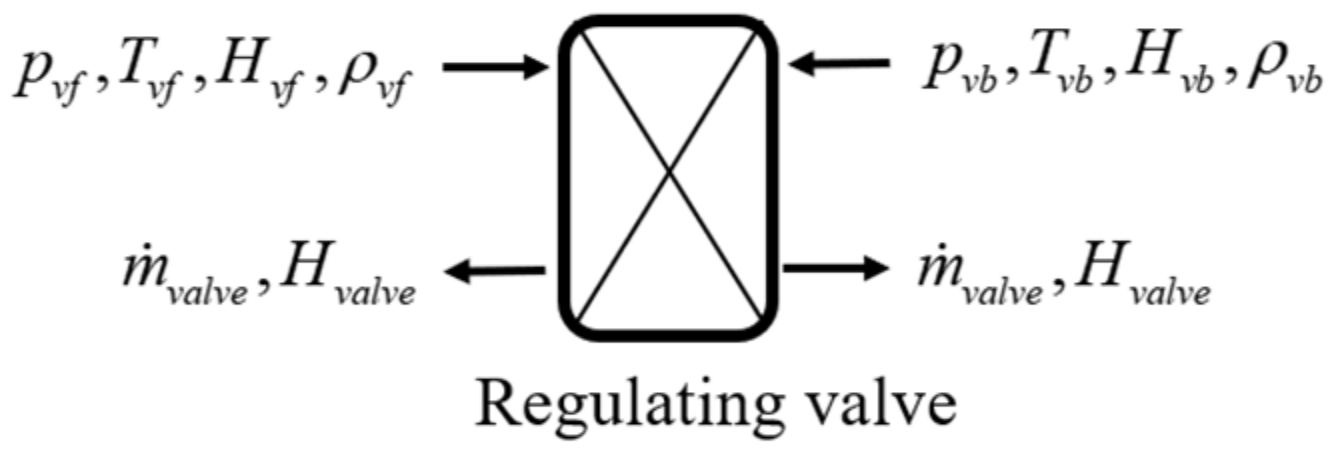

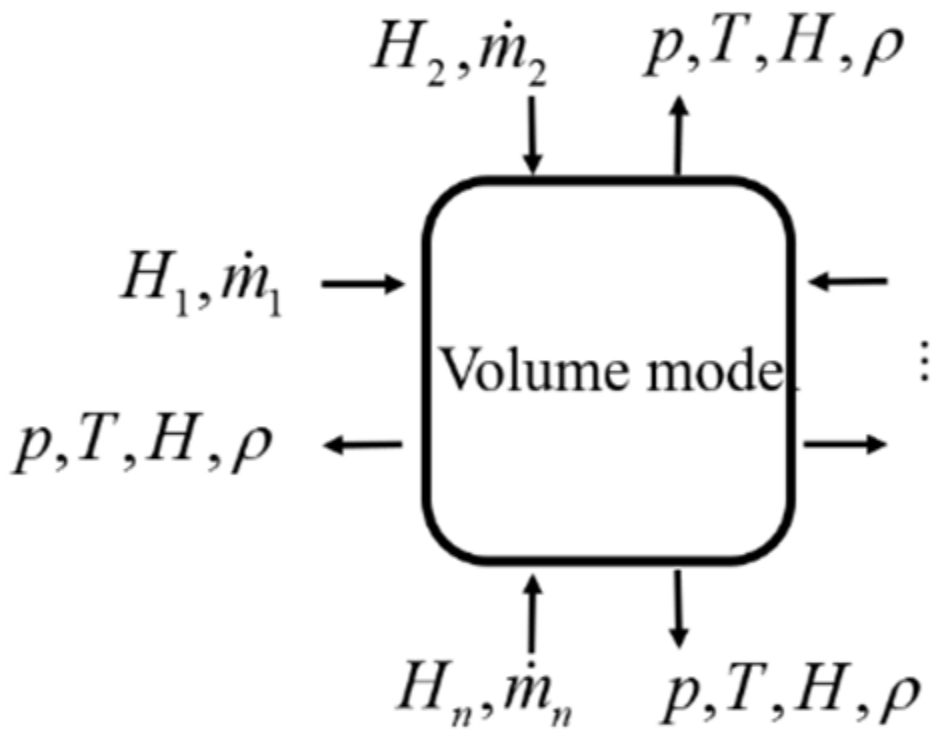
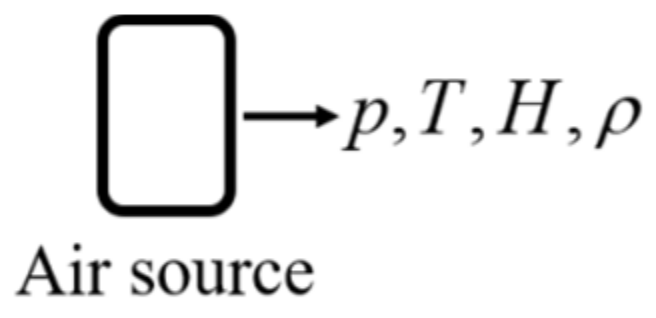


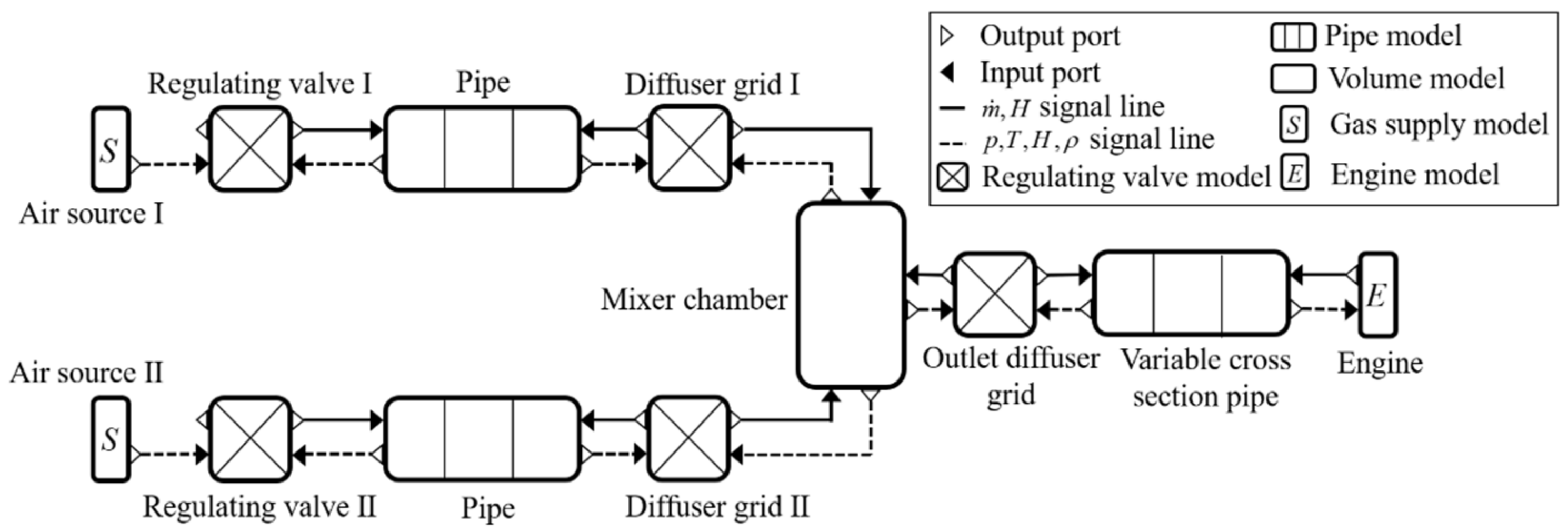
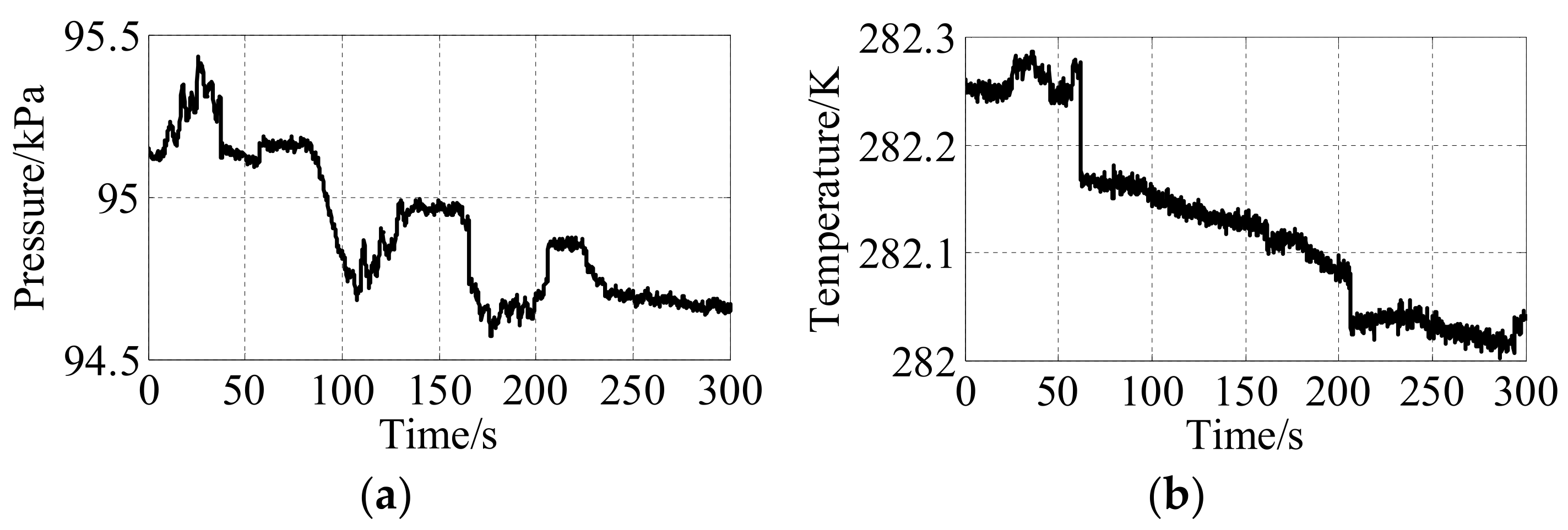




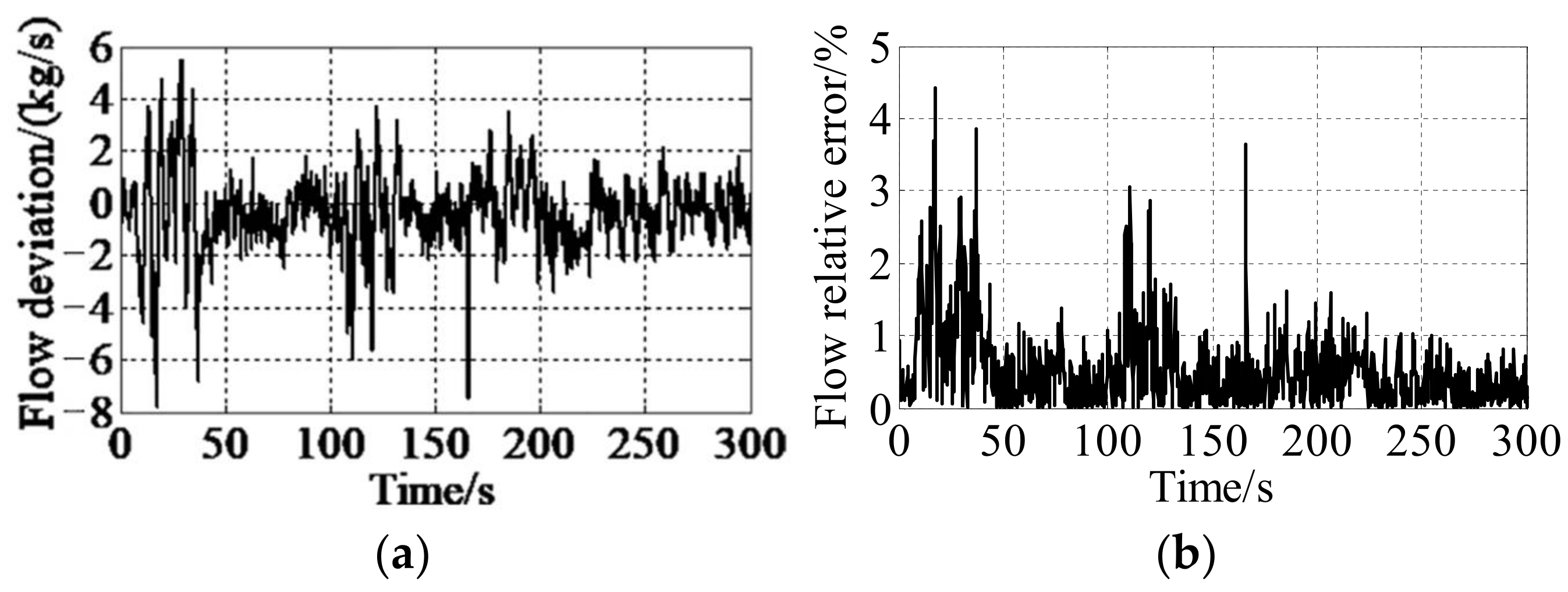
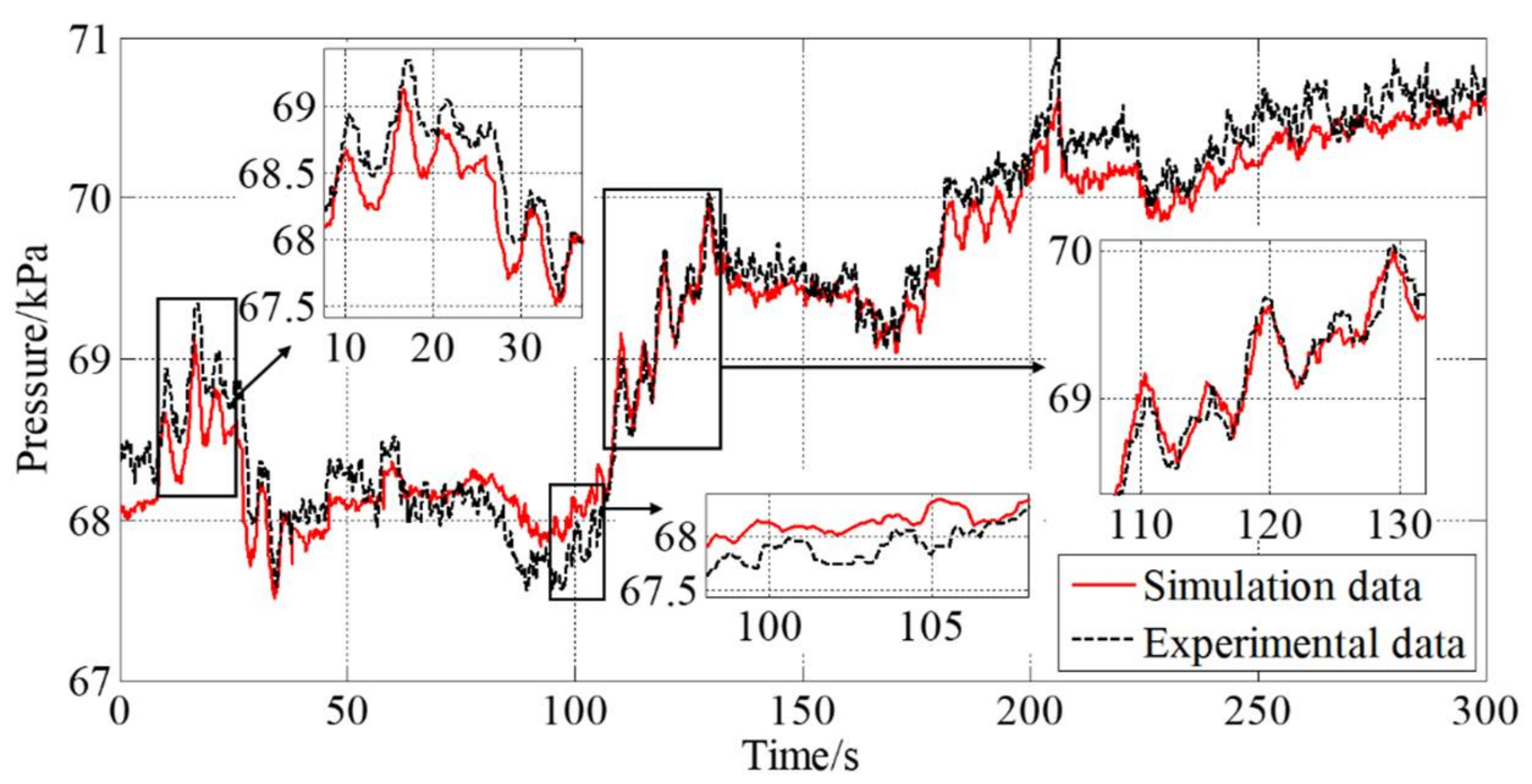



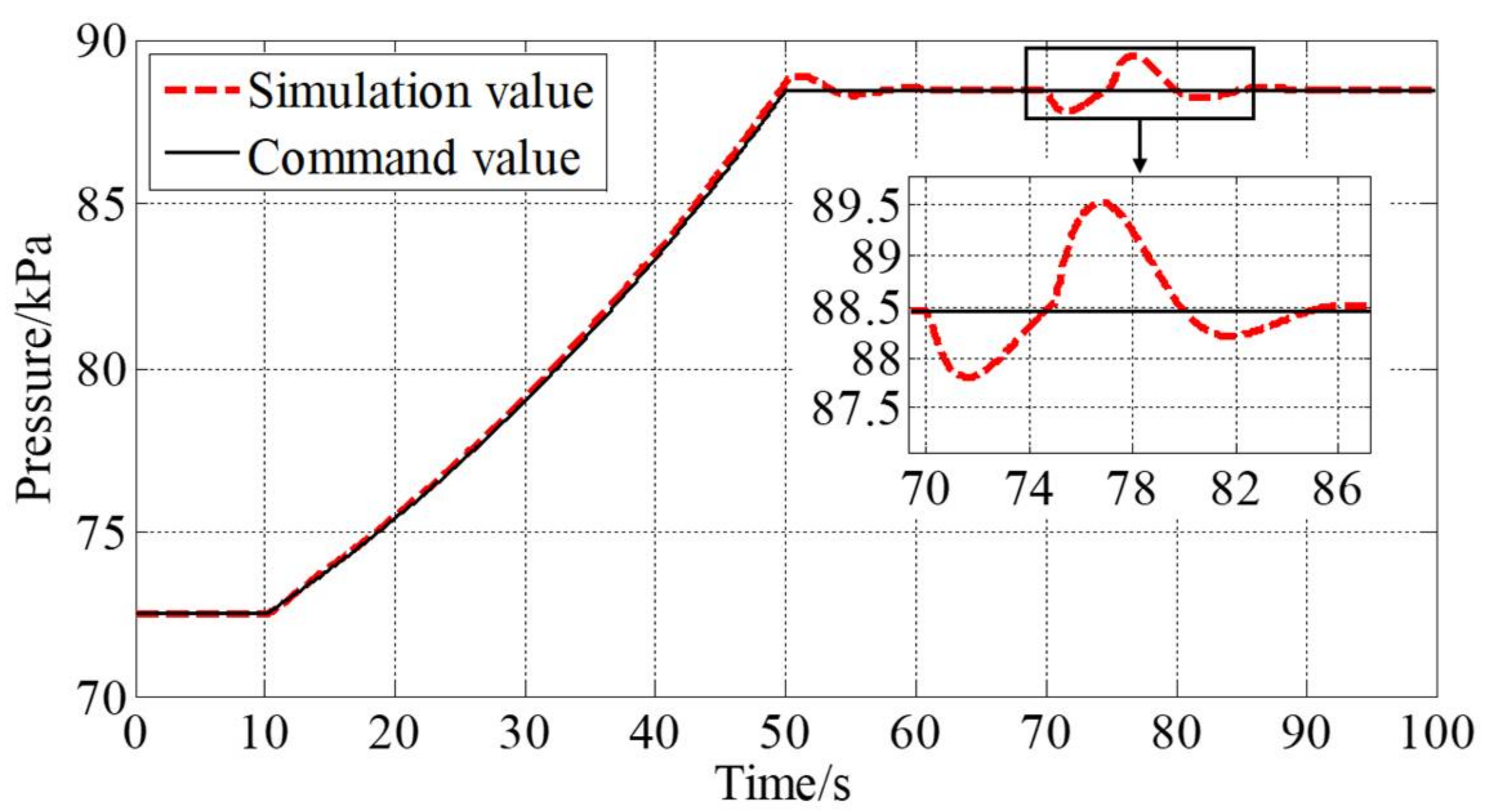

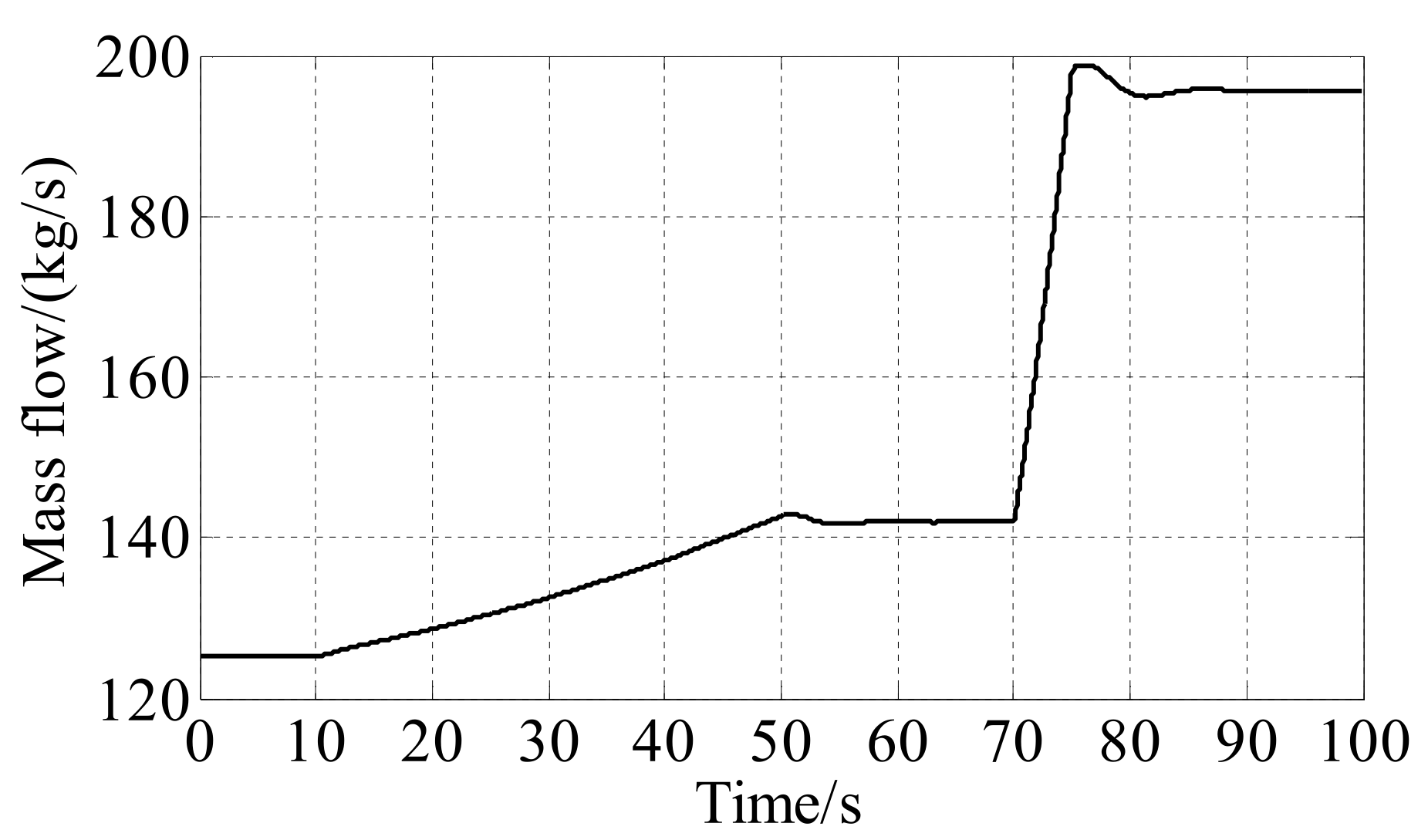

| Sensors | Accuracy | Acquisition Frequency |
|---|---|---|
| pressure sensor 1 | 0.05 kPa | 20 Hz |
| pressure sensor 2 | 0.05 kPa | 50 Hz |
| pressure sensor 3 | 0.05 kPa | 20 Hz |
| temperature sensor 2 | 0.1 K | 50 Hz |
| temperature sensor 3 | 0.1 K | 20 Hz |
Publisher’s Note: MDPI stays neutral with regard to jurisdictional claims in published maps and institutional affiliations. |
© 2022 by the authors. Licensee MDPI, Basel, Switzerland. This article is an open access article distributed under the terms and conditions of the Creative Commons Attribution (CC BY) license (https://creativecommons.org/licenses/by/4.0/).
Share and Cite
Pei, X.; Liu, J.; Wang, X.; Zhu, M.; Zhang, L.; Dan, Z. Quasi-One-Dimensional Flow Modeling for Flight Environment Simulation System of Altitude Ground Test Facilities. Processes 2022, 10, 377. https://doi.org/10.3390/pr10020377
Pei X, Liu J, Wang X, Zhu M, Zhang L, Dan Z. Quasi-One-Dimensional Flow Modeling for Flight Environment Simulation System of Altitude Ground Test Facilities. Processes. 2022; 10(2):377. https://doi.org/10.3390/pr10020377
Chicago/Turabian StylePei, Xitong, Jiashuai Liu, Xi Wang, Meiyin Zhu, Louyue Zhang, and Zhihong Dan. 2022. "Quasi-One-Dimensional Flow Modeling for Flight Environment Simulation System of Altitude Ground Test Facilities" Processes 10, no. 2: 377. https://doi.org/10.3390/pr10020377
APA StylePei, X., Liu, J., Wang, X., Zhu, M., Zhang, L., & Dan, Z. (2022). Quasi-One-Dimensional Flow Modeling for Flight Environment Simulation System of Altitude Ground Test Facilities. Processes, 10(2), 377. https://doi.org/10.3390/pr10020377







